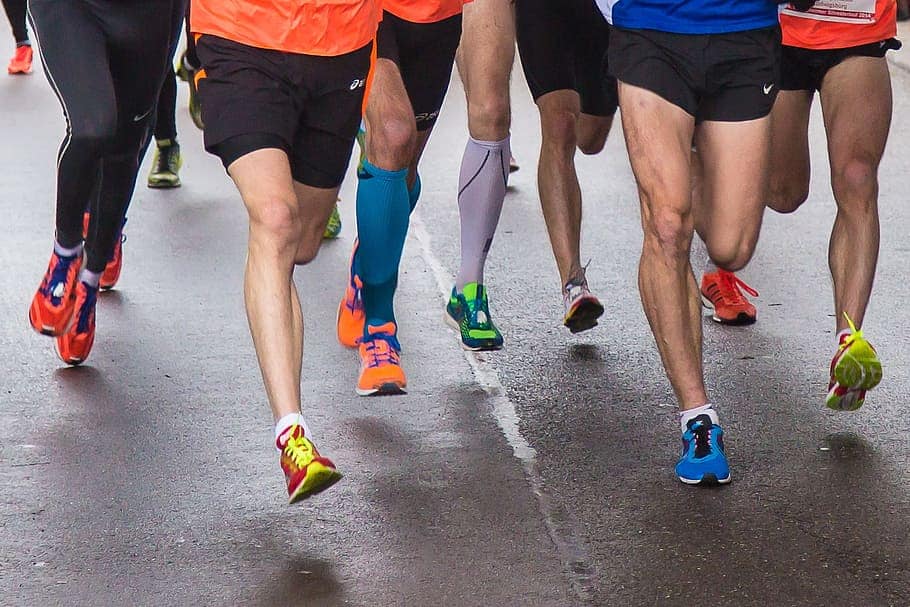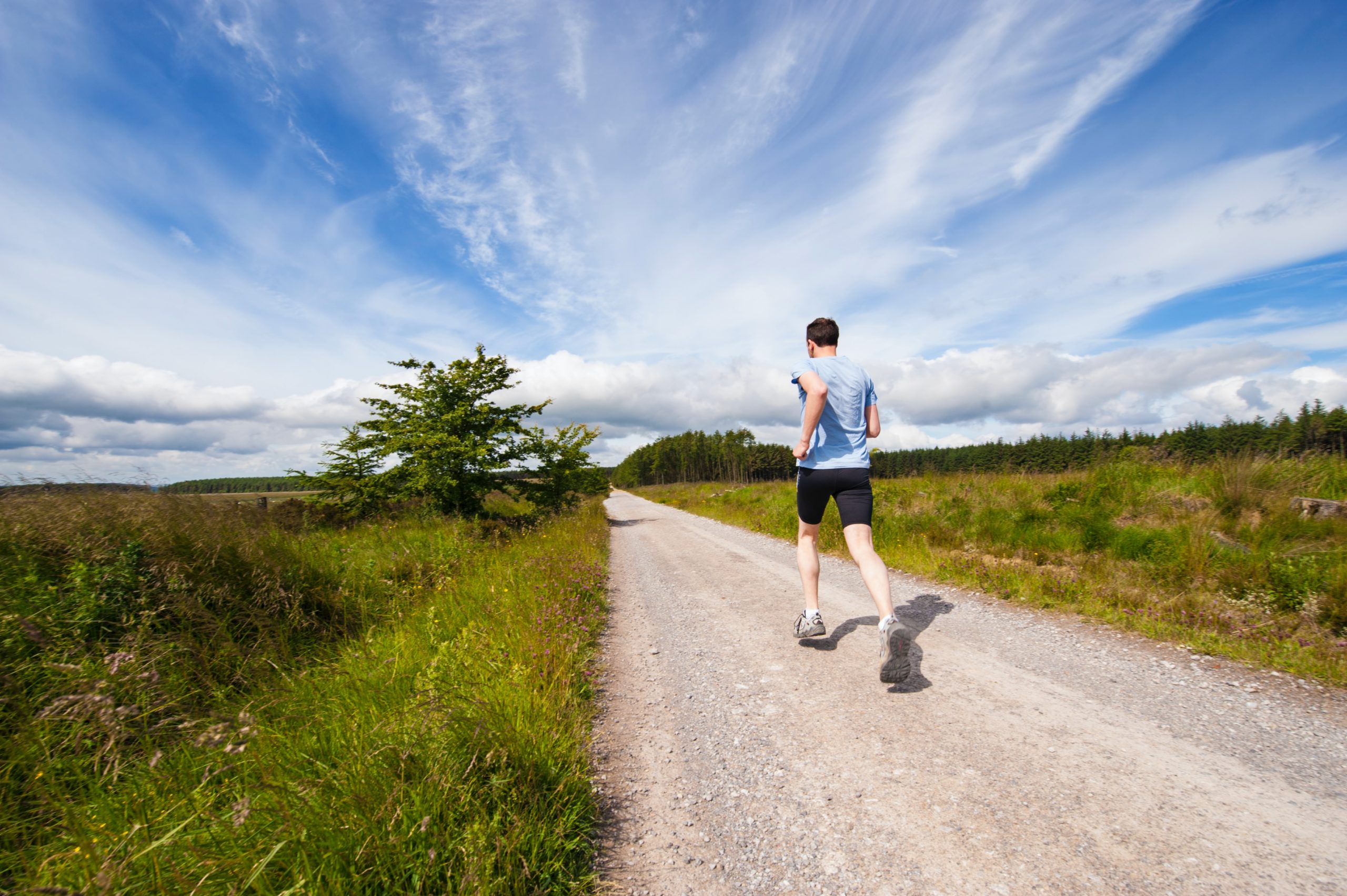A top running coach shares common pound-the-pavement mistakes.

For something anyone can just walk out of his front door and do, guys sure know how to screw up running.
From their pre-run rituals to their on-the-track form, guys set themselves up for sucky runs, workout plateaus, and possible injury. But, hey, that’s not your fault. After all, has anyone ever told you how to run? Probably not. And no, running’s not as simple as putting one foot in front of the other really quickly.
So, to help you get your runs on track, we chatted with top running coach Jason Fitzgerald, a USA Track Field-certified coach and the founder of Strength Running. Read on to learn the most common running mistakes you’re probably making. If, after reading this, you still make the mistakes, well, you have no one to blame but yourself.
YOU MAKE EVERY RUN THE SAME
Routines are too comfy. If every time you lace up your running shoes, you cover the same course in the same amount of time, your runs aren’t going to improve. Eventually, your body will get used to what you’re doing and your runs will no longer provide your body any stimulus to get stronger, faster, or leaner, Fitzgerald says.
Mix Things Up:Add variety to your runs by altering three key variables: Distance, terrain, and speed. “Variations in all of them can have a big impact not only on how you feel but how you perform,” he says. For instance, dividing your weekly mileage up so that you have one long run a week that’s a few miles longer than your other ones, can add a lot of endurance and make your shorter runs feel easier so that you can take them at a faster pace. Or, if you have a favorite loop around your neighborhood park you like to take every day, try performing some fartleks, he says. Swedish for “speed play,” a farlek is just an unstructured bout of fast-paced running interspersed into a regular run. Every once in a while, try sprinting for 30 seconds, to that tree, or past that mailbox. It’ll boost your running economy to help you run faster and easier.
2. YOUR STRIDES ARE TOO LONG
This mistake won’t just slow you down, it’ll hurt you. Long strides hit your body hard, causing greater impact on your joints and also making you land on your heel. Landing on your heel rather than mid- or forefoot may slow you down and increase your injury risk, Fitzgerald says.
Pick Up the Pace: On an easy run, aim for your feet to hit the ground about 180 times per minute, he says. Increasing your cadence will automatically cause your feet to hit the ground underneath, not in front of, your body to minimize injury risk. It will also become easier to run with a mid- or forefoot strike. During your next run, have your running buddy count the number of times your right foot hits the ground in a minute. Multiply by two. That number should be close to 180. You can also use apps like AudioStep, which adjusts your music to play at a tempo of 180. Run to the beat of the music and you’ll be on track.
3. YOU DON’T STRENGTH TRAIN
Running’s a great workout, but it’s not a complete workout, Fitzgerald says. It doesn’t work all of your muscles evenly, so if all you do is run, some muscles could be left overdeveloped. Plus, if you have pre-existing muscular imbalances (and most guys do), your body might use less-than-ideal muscles to power your runs, contributing to overuse injuries.
Move Some Iron:Strength training is a great compliment to any running routine, he says. Try performing strength moves on off-days and days in which your runs are short and easy. These exercises will score you a balanced body.
4. YOU STRETCH BEFORE YOU RUN
Trying to touch your toes before heading out on a run is no bueno. Static stretching temporarily reduces the amount of force your muscles can produce, Fitzgerald says. Think of it like a rubber band. If you stretch it out, it won’t be quite as elastic as it was before. Same idea here.
Get Dynamic:Still, you don’t want to start a run with cold muscles. To get blood moving and warm them up, try performing some dynamic stretches that mimic the motion of running, he says. Leg swings, high knees, and bodyweight squats and lunges are all good options. As is walking or slowly jogging.
5. YOUR ARMS ARE ALL OVER THE PLACE
When running, a lot of guys’ arms do way more than pump back and forth, they fling across their bodies. And besides threatening to strike any fellow runners who dare try to pass them, if your arms do the same, they could slow you down, Fitzgerald says. After all, a body in motion stays in motion. And you want your motion heading toward the finish line.
Stay on the Straight and Narrow: Sure, you could just focus on keeping your arms by the side of your body, but it also turns out that how your arms and torso moves has a lot to do with what the rest of your body is doing. By shortening your strides (yep, we’re on that again!), your body won’t have to rotate in order to reach your hips forward with every step. Also focusing on “running tall” can help. “Imagine there is a string attached to the top of your head that’s pulling your body toward the sky,” he says.






